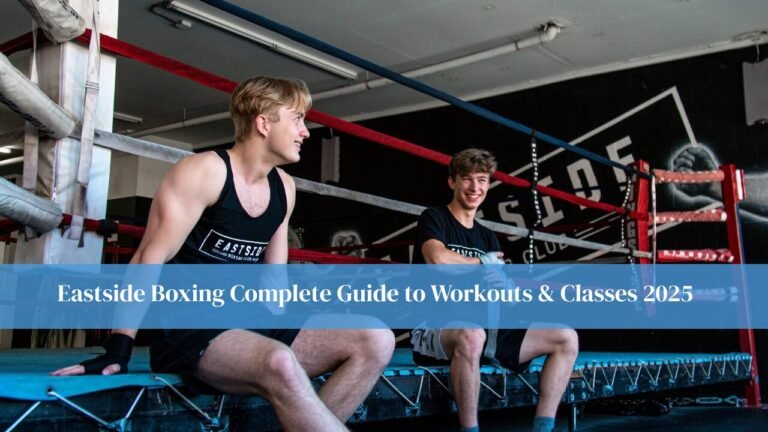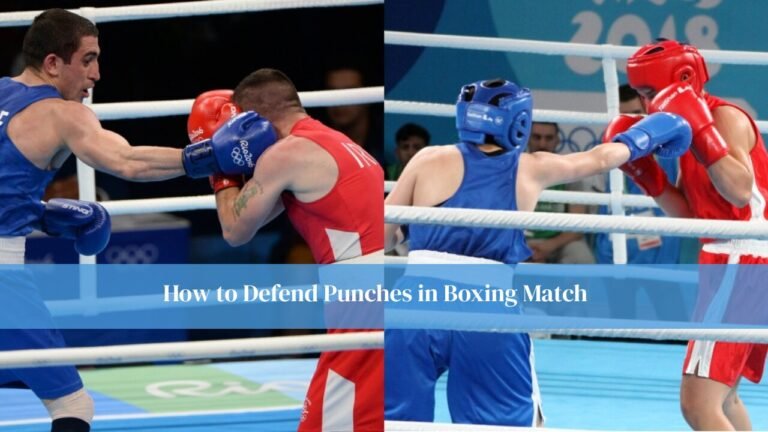In boxing, where every inch counts, “reach” can be the subtle difference between victory and defeat. While speed and power often steal the spotlight, reach remains one of the most misunderstood yet critical measurements in the sport. So what exactly is reach in boxing? And how do you measure it accurately?
Whether you’re a beginner stepping into the ring for the first time or a seasoned fighter trying to gain every advantage possible, knowing your reach and how to use it effectively could be a game-changer. Let’s break down the science behind reach, the best way to measure it, and why it matters more than you might think.
key Takeaways
- Reach in boxing measures total wingspan, not just arm length, and directly affects striking distance and fight control.
- A longer reach can help manage range and defense, but it only becomes an advantage with proper technique and strategy.
- Shorter-reach fighters can still succeed by mastering footwork, angles, and inside fighting skills.
- Accurate reach measurement helps fighters and coaches design smarter training and game plans.
What Is Reach in Boxing?
Reach in boxing refers to the total distance from the tip of one middle finger to the other when a person stretches their arms out horizontally. It’s commonly confused with arm length, but the two are not identical.
In fact, reach includes both arms and the width of the chest, making it a more comprehensive measure of a fighter’s potential striking range. It’s typically measured in inches and appears on a boxer’s official stats during fight promotions.
A longer reach often allows a fighter to land punches from a safer distance, control the pace of a fight, and keep opponents at bay. However, reach alone doesn’t win fights — it’s how you use it that counts.
Why Is Reach So Important in Boxing?
Boxing is all about timing, distance, and precision. A fighter with a longer reach can control the range more effectively, keeping their opponent from closing in. This can offer significant advantages, especially in fights where defensive tactics and counterpunching play key roles.
A classic example is Lennox Lewis, who often used his impressive 84-inch reach to dominate from a distance. Similarly, Muhammad Ali mastered the art of hitting without being hit, using his reach as a defensive and offensive weapon.
Still, there are successful fighters with shorter reach who have learned to fight inside and close the distance quickly. Mike Tyson, for example, had a reach of only 71 inches but overwhelmed opponents with speed, power, and relentless pressure.
How Do You Measure Reach in Boxing?
Measuring reach is simple in theory but must be done accurately. Stand tall with arms extended to the sides, forming a straight line. With the help of another person, measure from the tip of the middle finger on one hand to the tip of the middle finger on the opposite hand.
This measurement, also known as “wingspan,” is your official reach. It’s essential to keep your arms fully extended and parallel to the ground to avoid inaccurate results.
For more advanced training, many gyms use body composition tools or digital scanners to ensure exact numbers. But at home or in a traditional gym, a flexible tape measure and a partner are all you need.
Arm Length vs. Reach: What’s the Difference?
While often used interchangeably, arm length and reach are not the same. Arm length is measured from the armpit to the end of the fist. Reach, on the other hand, includes both arms and the width of the chest.
Some fighters may have longer arms in proportion to their height but still possess a shorter reach because of a narrower chest. Others, with broader shoulders or a wide frame, may have deceptively long reach despite average arm length.
Understanding this distinction helps coaches and fighters better evaluate fighting styles and strategies. In close-range fights, arm length may matter more. But in long-range exchanges, total reach becomes the determining factor.
The Role of Reach in Fight Strategy
A fighter’s reach isn’t just a number it shapes their entire strategy. Long-reach boxers tend to favor jabs, straight punches, and counterattacks from a distance. Their goal is to maintain control of the ring without allowing opponents to get too close.
Shorter-reach fighters often develop head movement, footwork, and angles to close distance quickly and land punches on the inside. They rely on hooks, uppercuts, and combinations from short range.
Famous matchups like Floyd Mayweather Jr. vs. Manny Pacquiao highlighted this dynamic. Mayweather’s superior reach allowed him to fight at range, while Pacquiao needed to press inside and land quick flurries.
Reach is not a limitation it’s a tool. Knowing how to use your body’s natural dimensions is part of becoming a complete fighter.
Does Reach Always Translate to an Advantage?
Not always. A longer reach can be a double-edged sword. While it offers range, it can also create openings if not used correctly. Overextending punches can expose a fighter to counters, especially against opponents with strong inside skills.
Additionally, fighters with long reach sometimes struggle with close-range defense. They may lack the compactness needed to protect their body or respond effectively in tight exchanges.
This is why training must be tailored to your specific body type. A coach with experience will help turn a physical trait like reach into a competitive advantage or compensate for its absence with speed, technique, and movement.
Case Studies Fighters and Their Reach
Let’s take a quick look at how reach influenced real fighters’ careers:
Deontay Wilder Known for his 83-inch reach, Wilder uses his long arms to land devastating straight rights. His knockout power combined with his ability to strike from a distance makes him one of the most dangerous punchers in heavyweight history.
Vasiliy Lomachenko With a shorter reach, Lomachenko relies on footwork, angles, and precision. His ability to slip inside and attack from unexpected directions has earned him global recognition, proving that reach is just one part of the equation.
Conor McGregor Crossing into MMA, McGregor’s 74-inch reach (compared to his height of 5’9”) gave him a big advantage in striking. His ability to land shots at distance made his left hand one of the most feared weapons in the octagon.
These examples show how reach contributes to a fighter’s toolbox — but doesn’t define the entire skill set.
Can You Improve or Increase Your Reach?
Biologically, your reach is mostly determined by genetics. However, mobility, flexibility, and muscle conditioning can enhance how you use it.
Boxers who train for range often include exercises that focus on shoulder flexibility, back posture, and efficient punch mechanics. By improving your reach’s practical use — how far you can punch without overcommitting you optimize your body’s natural reach.
Shadowboxing, resistance bands, and pad work are common drills used to extend effective range. It’s less about changing your anatomy and more about maximizing performance.
Common Myths About Reach in Boxing
One of the biggest myths is that reach automatically gives you the upper hand. The truth? Only if used well. Long-reach fighters still need timing, defense, and footwork.
Another common misconception is that short-reach fighters can’t win against taller opponents. History says otherwise. Fighters like Roberto Durán and Joe Frazier proved that heart, aggression, and skill can overcome physical disadvantages.
Lastly, some believe that reach is static. While your wingspan doesn’t change, your effective reach how far and accurately you can land punches definitely improves with technique and training.
Measuring Reach at Home What You Need to Know
You don’t need expensive equipment to measure reach. All you need is a measuring tape and a friend to assist you. Stand against a wall, stretch your arms horizontally, and ensure the measuring tape runs straight from fingertip to fingertip.
Stay relaxed, don’t hunch your shoulders, and keep your arms level. This gives you the most accurate reading. Record it in inches and refer back to it when tailoring your training or sparring strategies.
If you’re part of a boxing gym or training program, your coach may take this measurement for you and use it to shape your drills.
FAQs
What is a good reach for a boxer?
There’s no universal “good” reach, but longer reach often provides advantages in striking range. Typically, a reach equal to or greater than your height is considered favorable.
How does reach affect punching power?
Reach doesn’t directly affect power. However, longer arms can generate more leverage. That said, technique and body mechanics are far more important than just reach when it comes to knockout power.
Can shorter-reach fighters succeed in boxing?
Absolutely. Many champions had shorter reach but compensated with speed, aggression, and inside fighting techniques. Strategy matters more than raw measurement.
Is reach the same as wingspan?
Yes, in boxing, reach is usually measured as wingspan fingertip to fingertip with arms outstretched.
Does height determine reach?
Height often correlates with reach but not always. Some individuals have disproportionately long or short arms for their height, so it’s important to measure reach directly.
Conclusion
Reach in boxing is more than just a number, it’s a critical factor that shapes how you fight, train, and compete. Knowing how to measure it accurately gives you insight into your style and helps you tailor your strategy in the ring.
Whether you’re blessed with long levers or built for close-range action, your reach is a tool one that, when used wisely, can elevate your performance and give you a winning edge.
Want more boxing insights and expert breakdowns? Visit boxing essential to learn more.




